What you need to know about caring for a large-leaved brunner, as well as planting it
Planting a large-leaved Brunner will become a real lifesaver for a gardener, whose plot is covered with shade in the afternoon, groundwater accumulates in the lowlands. In a word, the flower will grow well where the root system of many plants will rot.
Often such places are empty, flower beds are bare, and some owners go for tricks and plant artificial bushes. But the modest Brunner has long been known to landscape designers who use her unpretentiousness when landscaping parks. Recently, this plant has been widely used to decorate alpine hills, it is planted on the banks of ponds and lakes.
Modest beauty from the Caucasus
The Borage family, and botanists attributed the Brunner (Bruner) to it, includes only three species of this flower. But the breeders did their best - several varieties and many hybrids were born. The beauty of a herbaceous plant is not immediately noticeable, being in the mountains, you can walk by and not see its modest charm: pubescent large stems with huge silver leaves in the form of a heart grow right from the ground. Below, the leaf plate is pubescent even more, it seems gray in appearance, and velvety to the touch.
Advice! When decorating garden paths, you can use two types of brunner (brunella): large-leaved and Siberian. Small differences between species will only emphasize the individuality of each, but at the same time, their combination will give the composition a logical completeness.
The homeland of the plant is the slopes of the Caucasus mountains. It has long gained popularity among gardeners in European countries, as well as on other continents. It is grown not only in order to cover shady, swampy areas, but because of a short, memorable flowering. It begins at the end of April and lasts only a month: among the wide silver leaves sprout peduncles with delicate lilac buds, collected in graceful inflorescences (panicle or scutellum). The most popular varieties among breeders:
- Millennium Zilber - has leaves with neat splashes of white spots.
- Langtries is the owner of transparent silvery "dewdrops" on the rims of the leaves.
- Hudspan Cream - famous for its openwork creamy pattern on the edges of huge leaf plates.
Brunner large-leaved differs from other species in the minimum loss of decorative leaves. Some of them dry up and die off along with the inflorescences, but after a short time the plant grows green mass again. And the end of August or the beginning of September will delight you with the second wave of lilac bud formation. In Western countries, the plant is dug up in late autumn, and transplanted into flowerpots - flowering will be on Christmas Eve.
Convenient location
To facilitate the further care of the plant, you need to choose a suitable site for growing it. Places abundantly flavored with organic matter will not work - large-leaved brunner will grow a powerful leaf mass, and flowering will be scarce or disappear altogether. The most successful planting will be in heavy clay soil, on which moisture is retained. Typically, such soils are located in shady places, where the sun looks only at a sultry noon.
Advice! The flower is so unpretentious that it grows even in direct sunlight. Its wide leaf plates evaporate a large amount of moisture, so watering in such areas should be done daily.
Brunner's delicate leaves respond well to high humidity.The plant will become a real boon for the owners of gardens, on the territory of which reservoirs are located: their banks will be decorated with luxurious bushes with delicate inflorescences. Some growers plant in large flowerpots and place them around swimming pools and recreation areas. Considering the pleasant aroma exuded by the inflorescences, a walk in such a garden will be remembered for a long time.
Breeding methods - it couldn't be easier
After flowering, Brunner forms fruits with small seeds. If they are not collected, independent sowing on the ground and further thickening of the planting will occur. Therefore, gardeners prefer to remove the boxes from the bushes in advance. The right time for sowing is late autumn. The fact is that successful cultivation implies seed stratification; they need to stay in the cold for several months.
Advice! If planting is planned for the summer, the seeds should be refrigerated for several months. Before that, you need to wrap them with cotton cloth.
Few flower lovers propagate large-leaved Brunner with seeds. The plant's rhizome is thick, fleshy and perfectly divided into several parts without any stimulants for root formation. The middle of summer is suitable for division, when the flowering has ended. The algorithm of actions is as follows:
- Dig a flower out of the ground and cut off the entire leaf mass.
- The rhizome is thoroughly washed under running water and soaked for a short time.
- A sterile instrument is divided into several parts (each of them must have a kidney).
- Pieces of rhizomes are planted in prepared places.
- Water abundantly.
If the original plant has grown a powerful root system, the procedure is even easier. Brunners removed from the soil wash off the rest of the soil and soak for several hours. And then they divide by the natural collapse of the rhizome. The resulting parts are planted in flower beds.
Secrets of proper care
Planted under sprawling trees, Brunner does not need constant watering, it is produced only a few times per season. Since the flower does not require transplanting for more than 10 years, the choice of a shady area will reduce the care of the large-leaved brunner to a minimum. Direct sunlight quickly evaporates the moisture of the herb, so water it abundantly and often. Unlike most flowers, Brunners do not require certain hours of water treatment. Even in the daytime, the wide leaves will keep the moist soil from cracking.
All kinds of weeds are very fond of the flower. They grow freely among the bushes, enjoying the shade and coolness. Care is complicated by constant weeding, since weeds take from the ground the minerals necessary for the growth of large-leaved brunner. Experienced gardeners immediately after planting mulch the soil. You can use any material for this: needles of coniferous trees, hay, straw, leaves, high or low peat. The amount of weeds after mulching is significantly reduced.
Advice! With proper care, weeding and loosening is done with great care. The root system of the flower almost lies on the surface of the soil. Do not use too sharp objects, as well as deepen them more than 2-3 cm.
Brunner grows very quickly and can shade nearby plants. When planting and further care, you need to keep this in mind, leaving free space on the flower bed. To prevent the occurrence of fungal infections, constant thinning of herbaceous bushes is necessary. Timely removal of dried stems and inflorescences will also prevent the development of various putrefactive processes.
If the soil meets all the requirements of the flower, then the care does not imply the introduction of fertilizers. Only planting brunners on depleted or scarce soils may require additional feeding.It is best to use complex fertilizers, the concentration of the solution of which should be half the prescribed concentration. They feed the flower a couple of times throughout the summer. Excessive saturation of the soil with mineral salts will immediately affect the state of the leaves - ugly rusty spots will appear on them.
However, such spots often indicate the emergence of problems of a different kind. From neighboring plantings or with improper care, various rot occurs on the plants:
- Powdery mildew. The leaf plate and the stem are, as it were, covered with small whitish crystals. The plant dries up and dies.
- Brown rot. The spread of brown spots begins from the upper leaves and gradually covers the entire plant, leading to its death.
Severely damaged flowers must be removed from the ground and then burned far from the planting site. The surviving specimens should be treated with a modern fungicidal preparation. Full care includes a weekly routine check-up to detect:
- Aphids. Tiny transparent pests live on the most delicate parts of the brunner, feeding on their juices and causing a gradual withering away.
- Spider mite. Often attacks flowers with improper planting or poor watering. It is easy to detect the pest by the traces left - thin shiny cobwebs.
At this stage of care, the destruction of plants is not required. It is necessary to spray the Brunner with a solution of a preparation with insecticidal activity. When growing flowers near potato plantations or tomato beds, the likelihood of rot increases. For prevention, you can treat plants with fungicides a couple of times over the summer.
Growing perennial brunners in garden plots does not require special preparations for the upcoming wintering. The flower is frost-resistant; the owner only needs to cut the leaves. It is better not to allow repeated August flowering so that the plant does not waste energy on laying buds, but prepares for winter. If the soil has not been mulched before, then it must be done before the onset of frost.
If the gardener wants to surprise his loved ones with the flowering of a large-leaved brunner near the New Year tree, then the bush is transplanted into a flowerpot. It should be kept in a cool place at a temperature of 6-7 ° C for about a month. And then transfer to a warm room and wait for flowering. The surprise will be great.
Growing a Brunner gives the breeder a lot of opportunities to use it. Caring for an unassuming plant will be kept to a minimum. When composing compositions on flower beds, lungwort and various varieties of ferns will become excellent neighbors of the flower. Planting a brunner will be a good reason to get your own pond.


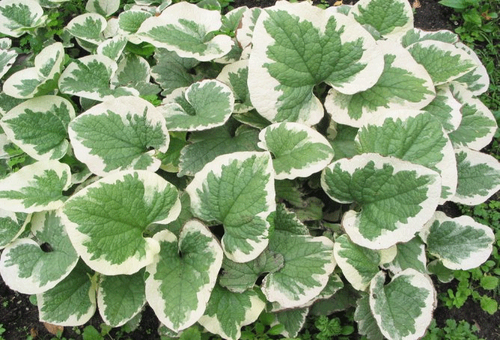
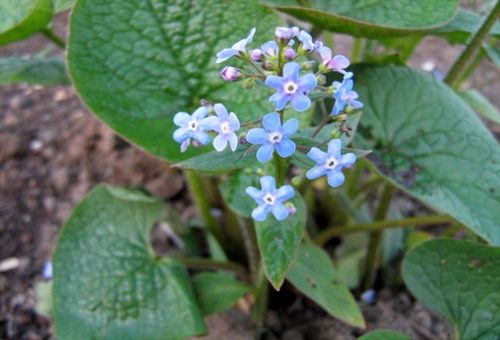
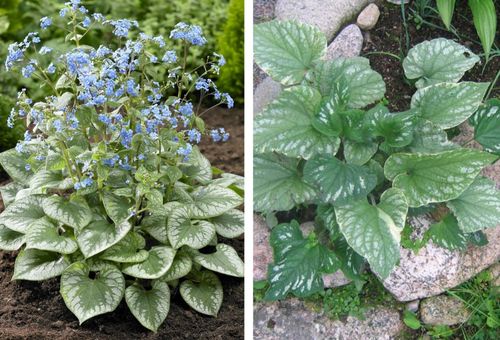

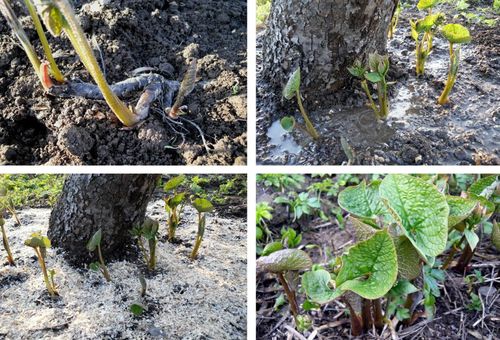
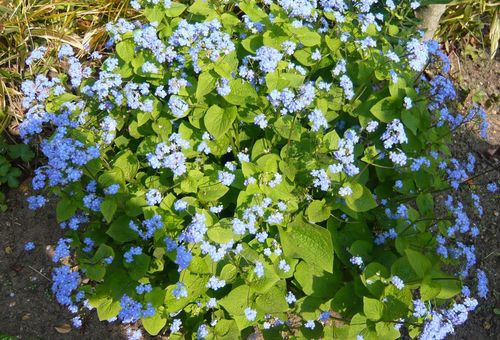
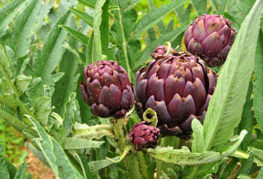
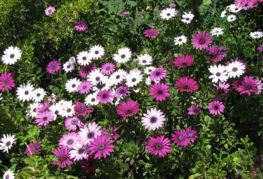
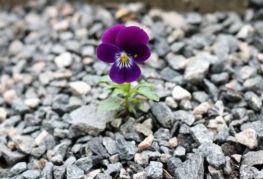
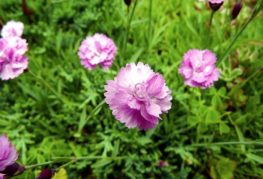
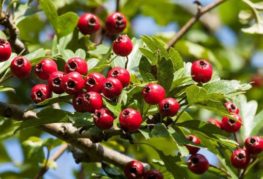
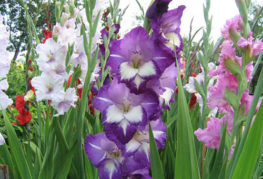
and will be published shortly.